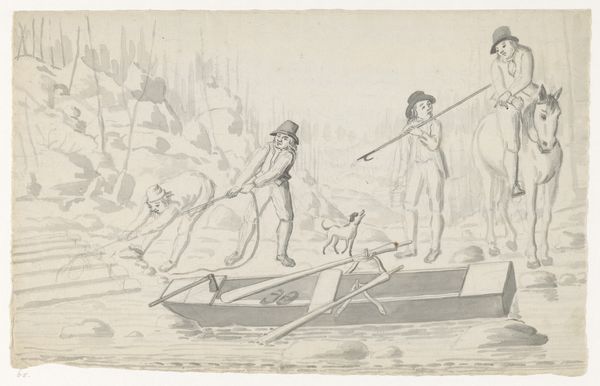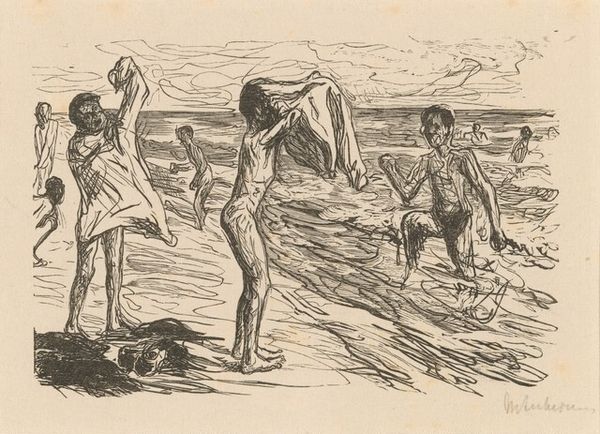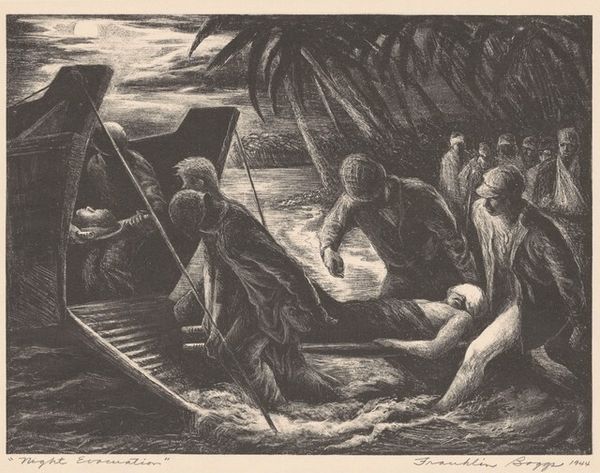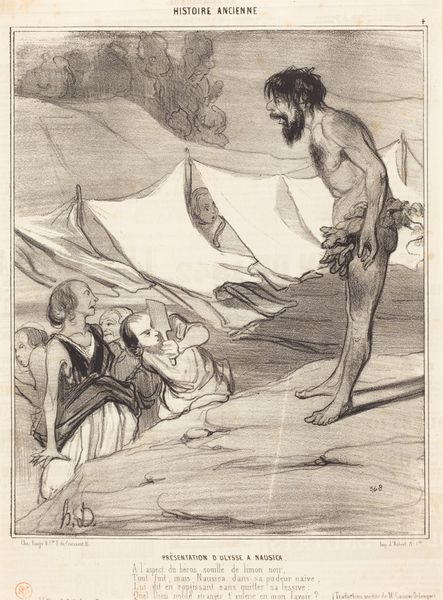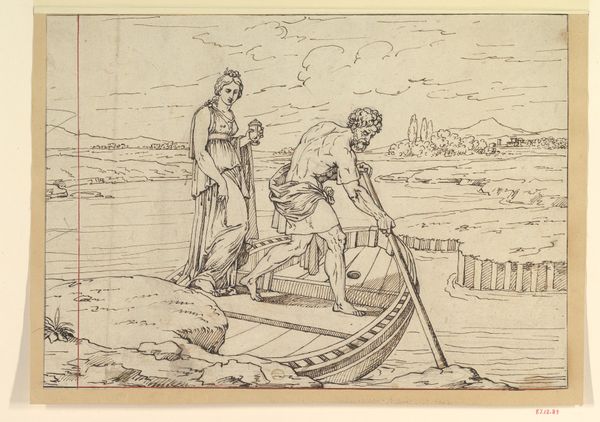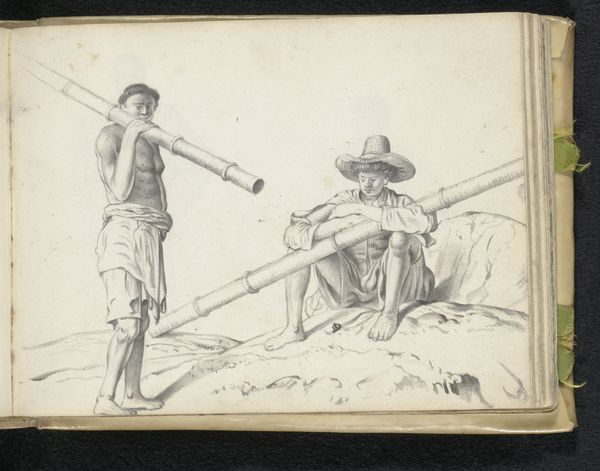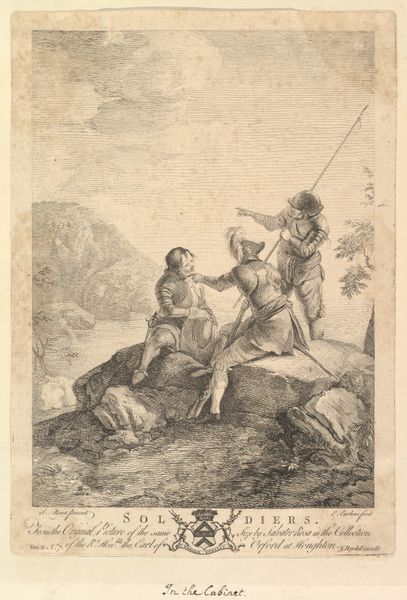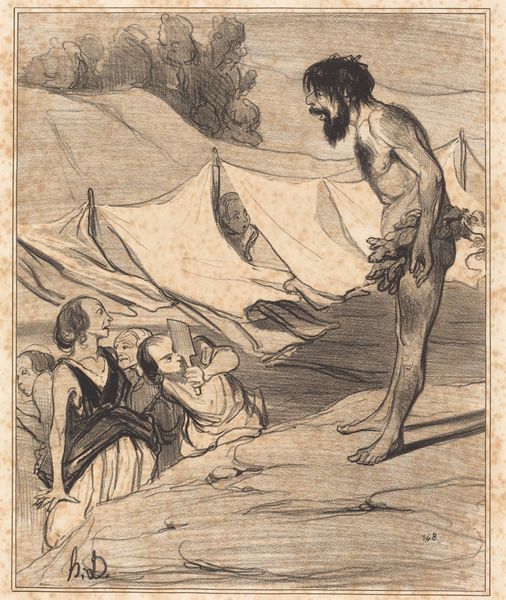
print, etching
narrative-art
baroque
etching
landscape
figuration
history-painting
Dimensions: plate: 10.7 x 15.8 cm (4 3/16 x 6 1/4 in.) sheet: 11.1 x 17.5 cm (4 3/8 x 6 7/8 in.)
Copyright: National Gallery of Art: CC0 1.0
Willem Basse created this etching called "Ulysses on the Island of the Goddess Calypso" during the Dutch Golden Age, a period marked by unprecedented economic growth and cultural flourishing in the Netherlands. The artwork depicts a scene from Homer's Odyssey, where Ulysses is held captive by the nymph Calypso on her island. Here he is building a boat so he can return home. Two figures that could be Calypso and a maid stand in the background, passively observing Ulysses. The story of Ulysses is one of a man trying to return home. But what does it mean to return home? How does one rebuild their life, their relationships, their sense of self after being away? Calypso, a powerful goddess, is ultimately unable to provide what Ulysses truly desires: a sense of belonging and identity rooted in his homeland and family. Basse’s etching resonates with anyone who has longed for home, for a place of belonging, reminding us of the universal human desire for connection and identity.
Comments
No comments
Be the first to comment and join the conversation on the ultimate creative platform.


